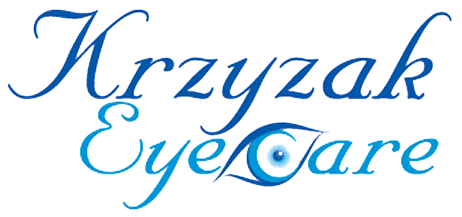This new study, called the Age-Related Eye Disease Study 2 (AREDS2), will build upon results from the earlier Age-Related Eye Disease Study (AREDS). The original study results were released five years ago today. The study found that high-dose antioxidant vitamins and minerals (vitamins C and E, beta-carotene, zinc, and copper), taken by mouth, reduced the risk of progression to advanced AMD by 25 percent, and the risk of moderate vision loss by 19 percent.
Research suggests that antioxidants reduce your risk of cataracts and macular degeneration. Specific antioxidants can have additional benefits as well for example, vitamin A protects against blindness, and vitamin C may play a role in preventing or alleviating glaucoma. Essential fatty acids appear to help the eye in a variety of ways, from alleviating symptoms of dry eye syndrome to guarding against macular damage.
Try these foods to make sure you get enough eye-protecting nutrients:
- Vitamin A: cod liver oil, liver, carrots, sweet potatoes, butternut squash
- Lutein and zeaxanthin: spinach, kale, collard greens
- Vitamin C: sweet peppers (red or green), kale, strawberries, broccoli, oranges, cantaloupe
- Bioflavonoids: citrus fruits, cherries, grapes, plums
- Vitamin E: sunflower seeds, almonds, hazelnuts
- Selenium: brazil nuts, yeast, seafood
- Zinc: oysters, hamburgers, wheat, nuts
- Fatty acids: cold-water fish (salmon, mackerel, trout)
In general, you should eat plenty of green, leafy vegetables, two servings of fish per week, some nuts and some yellow or orange fruits and vegetables.
Please contact Drs. Krzyzak to discuss what research may suggest in relationship to the health of your eyes.
Omega 3 Fatty Acid and Your Eyes
A recent Harvard study identified an interesting new advantage for those who consume high amounts of foods rich in Omega-3 Fatty Acid: Women who ate these foods lowered their chances of dry eye syndrome by as much as 68 percent. Conversely, those who ate a higher ratio of omega-6 fats versus omega-3 fats doubled their odds of dry eye syndrome.
Dry Eye syndrome is one of the most frequent eye problems in the United States, and a common complaint of patients seeking eye care. It is usually caused by a problem with the quality of the tear film that lubricates the eyes and if felt to be related to ocular inflammation.
Dry eyes can lead to discomfort, burning, watery eyes, poor vision, and problems with reading, using a computer, or driving at night.
Omega-3 fatty acid intake reduces overall inflammation in the body, which has been shown to be a factor in dry eye syndrome. Another eye benefit from Omega-3 maybe a reduction in the risk of the most common cause of blindness in most developed countries, Age-Related Macular Degeneration (AMD).Age-Related Eye Disease Study 2(AREDS 2) is an ongoing clinical studies being conducted through the National Eye Institute at the National Institutes of Health that is looking into the relationship of high doses of dietary lutein, zeaxanthin and Omega-3 Fatty Acids in the development of advanced AMD.
Omega-3 deficiencies have been tied to many conditions, including:
- Heart disease
- Schizophrenia
- Depression
- Memory problems
- Weight gain
- Cancer
- Asthma/Allergies
- Inflammatory diseases
- Arthritis
- Diabetes
Essential Fatty Acids for Eye Health
You may find it hard to believe that fat is essential to your health, but it's true. Without fat, our bodies can't function properly. And without the proper kinds of fats in our diet, our eye health also may suffer.
Fatty acids are the "building blocks" of fat. These important nutrients are critical for the normal production and functioning of cells, muscles, nerves, and organs. Fatty acids are also required for the production of hormone-like compounds that help regulate blood pressure, heart rate, and blood clotting.
Some fatty acids called essential fatty acids (EFAs) are necessary to our diet, because our body can't produce them. To stay healthy, we must obtain these fatty acids from our food.
The two types of EFAs are omega-3 fatty acids and omega-6 fatty acids. Studies have found that omega-3 fatty acids, in particular, may benefit eye health.
How Fatty Acids Affect the Eyes
Essential fatty acids are critical for proper visual development in infants. Also, deficiencies of omega-3 fatty acids in adults (particularly omega-3) can lead to impaired vision. Studies suggest that prolonged deficiencies may increase the risk of damage to the retina. EFAs also play a role in helping eye fluids ( aqueous ) drain, which helps regulate intraocular pressure.
In 2007, a large multi-site study found that people who eat at least two servings of fish weekly are less likely to develop age-related macular degeneration (AMD), the leading cause of irreversible vision loss among people over 65 in the United States.
Those in the study who consumed the highest levels of omega-3 fatty acids, primarily from fish, had a 39 percent lower risk of AMD compared with those who ate the least fish (Archives of Ophthalmology, May 2007).
In a 2005 study, researchers found that the amount, type, and ratio of essential fatty acids in the diet may play a key role in the prevention of dry eye syndrome in women. Among other findings, the study conducted at Brigham and Women's Hospital in Boston (a teaching affiliate of Harvard Medical School), showed that women with the highest levels of omega-3 fatty acids in their diets reduced their risk of dry eye syndrome (DES) by 20 percent, compared with women with the lowest levels of omega-3 in their diet.
A dietary ratio of omega-6 to omega-3 fatty acids greater than 15:1 was associated with a 2.5-fold increased risk of DES in women.
Women who reported eating at least five servings of tuna per week had a 68 percent reduced risk of DES, compared with women who consumed one serving per week.
Other fish types that have lower levels of omega-3 fatty acids did not appear to protect against dry eye syndrome.
"Based on this report, preventing dry eye syndrome is another potential reason to follow a diet rich in tuna and other foods plentiful in omega-3 fatty acids," study author Debra Schaumberg, OD, MPH, said in the October 2005 issue of the American Journal of Clinical Nutrition.

